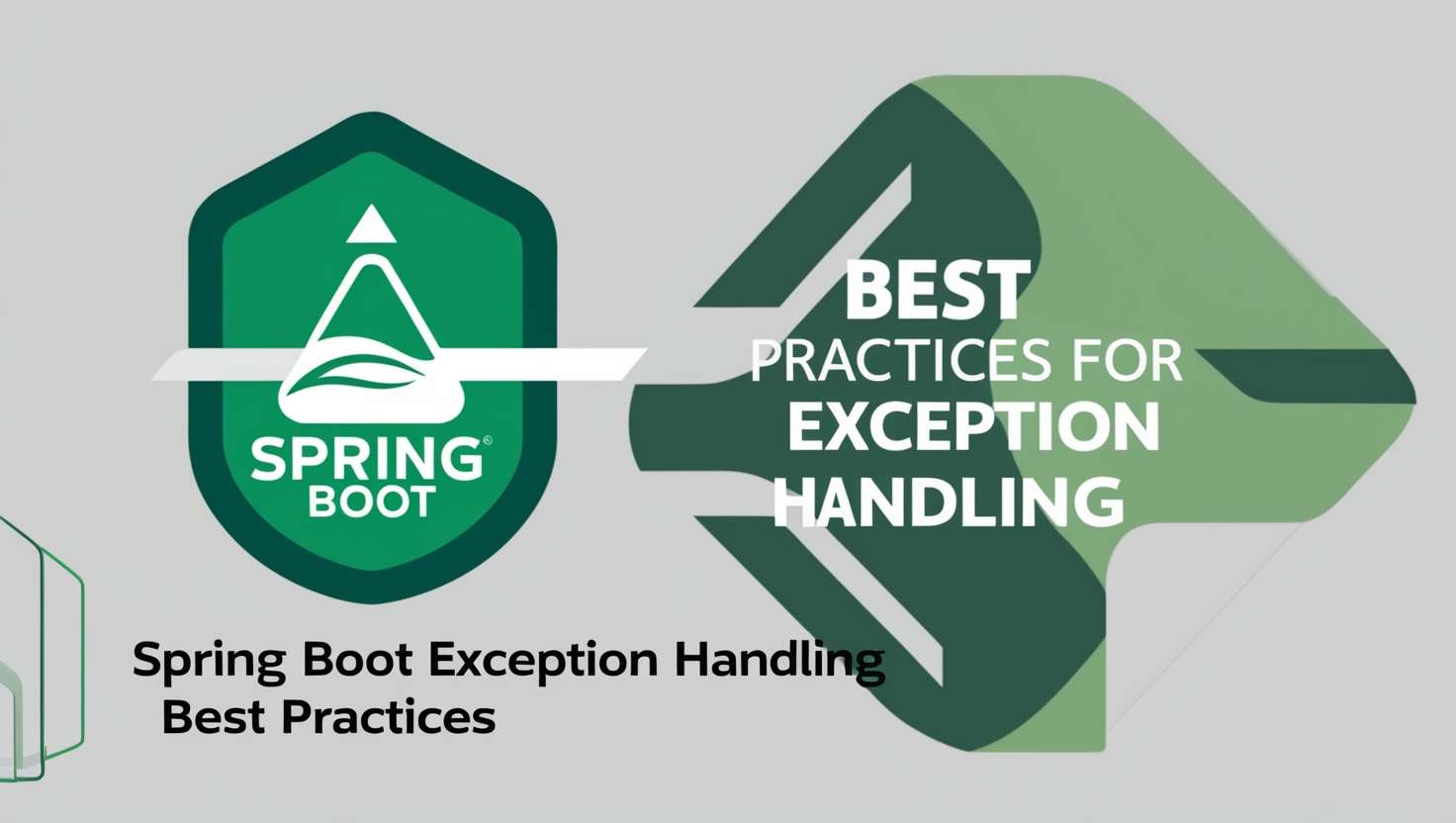Effective exception handling is crucial for building robust applications in Spring Boot. By implementing Spring Boot exception handling best practices, developers can ensure that errors are managed gracefully, providing users with clear feedback while maintaining application stability. In this guide, we will explore common pitfalls to avoid and essential strategies to enhance your error management, ultimately leading to a more resilient and user-friendly application.
Bad Practices
- Generic Exception Handling
- Description: Catching all exceptions with a single handler.
- Example:
@ControllerAdvice
public class GlobalExceptionHandler {
@ExceptionHandler(Exception.class)
public ResponseEntity<String> handleAllExceptions(Exception ex) {
return new ResponseEntity<>("An error occurred", HttpStatus.INTERNAL_SERVER_ERROR);
}
}
- Impact: This obscures the root cause of errors, making debugging difficult.
Not Logging Exceptions
- Description: Failing to log exception details.
- Example:
@ExceptionHandler(RuntimeException.class)
public ResponseEntity<String> handleRuntimeException(RuntimeException ex) {
return new ResponseEntity<>("A runtime error occurred", HttpStatus.INTERNAL_SERVER_ERROR);
}
- Impact: Without logging, you lose visibility into application issues, complicating troubleshooting.
Exposing Stack Traces to Clients
- Description: Sending detailed stack traces in error responses.
- Example:
@ExceptionHandler(Exception.class)
public ResponseEntity<String> handleException(Exception ex) {
return new ResponseEntity<>(ex.getMessage(), HttpStatus.INTERNAL_SERVER_ERROR);
}
- Impact: This can leak sensitive information about the application and confuse users.
Ignoring HTTP Status Codes
- Description: Returning a generic HTTP status (like 200 OK) for errors.
- Example:
@ExceptionHandler(Exception.class)
public ResponseEntity<String> handleException(Exception ex) {
return new ResponseEntity<>("Error occurred", HttpStatus.OK); // Incorrect status
}
- Impact: Misleading clients about the success of requests, causing confusion.
Hardcoding Error Messages
- Description: Using static, non-informative error messages.
- Example:
@ExceptionHandler(NullPointerException.class)
public ResponseEntity<String> handleNullPointer(NullPointerException ex) {
return new ResponseEntity<>("An error occurred", HttpStatus.INTERNAL_SERVER_ERROR); // Vague message
}
Spring Boot Exception Handling Best Practices
Specific Exception Handlers
- Description: Create dedicated handlers for different exceptions.
- Example:
@ExceptionHandler(ResourceNotFoundException.class)
public ResponseEntity<String> handleResourceNotFound(ResourceNotFoundException ex) {
return new ResponseEntity<>(ex.getMessage(), HttpStatus.NOT_FOUND);
}
Benefit: Provides clear and actionable feedback tailored to the specific error.
Centralized Exception Handling with @ControllerAdvice
Description: Use @ControllerAdvice to manage exceptions globally.
Example:
@ControllerAdvice
public class GlobalExceptionHandler {
@ExceptionHandler(MethodArgumentNotValidException.class)
public ResponseEntity<String> handleValidationExceptions(MethodArgumentNotValidException ex) {
return new ResponseEntity<>("Validation failed: " + ex.getBindingResult().getFieldError().getDefaultMessage(), HttpStatus.BAD_REQUEST);
}
}
Benefit: Keeps controllers clean and separates error handling logic.
Log Exceptions Appropriately
- Description: Implement logging for all exceptions with relevant details.
- Example:
private static final Logger logger = LoggerFactory.getLogger(GlobalExceptionHandler.class);
@ExceptionHandler(Exception.class)
public ResponseEntity<String> handleAllExceptions(Exception ex) {
logger.error("An error occurred: {}", ex.getMessage(), ex);
return new ResponseEntity<>("An unexpected error occurred", HttpStatus.INTERNAL_SERVER_ERROR);
}
- Benefit: Enhances visibility into issues, aiding in faster resolution.
Meaningful Error Responses
- Description: Structure error responses with status code, message, and timestamp.
Example:
public class ErrorResponse {
private LocalDateTime timestamp;
private String message;
private int status;
public ErrorResponse(LocalDateTime timestamp, String message, int status) {
this.timestamp = timestamp;
this.message = message;
this.status = status;
}
// Getters and setters
}
@ExceptionHandler(ResourceNotFoundException.class)
public ResponseEntity<ErrorResponse> handleResourceNotFound(ResourceNotFoundException ex) {
ErrorResponse errorResponse = new ErrorResponse(LocalDateTime.now(), ex.getMessage(), HttpStatus.NOT_FOUND.value());
return new ResponseEntity<>(errorResponse, HttpStatus.NOT_FOUND);
}
- Benefit: Provides clients with clear, consistent error information.
Custom HTTP Status Codes
- Description: Return appropriate HTTP status codes based on the error type.
- Example:
@ExceptionHandler(DataIntegrityViolationException.class)
public ResponseEntity<String> handleDataIntegrityViolation(DataIntegrityViolationException ex) {
return new ResponseEntity<>("Data integrity violation", HttpStatus.CONFLICT);
}
Benefit: Clearly communicates the outcome of requests, improving client understanding.
Graceful Degradation
- Description: Implement fallback mechanisms or user-friendly messages.
- Example:
@GetMapping("/resource/{id}")
public ResponseEntity<Resource> getResource(@PathVariable String id) {
Resource resource = resourceService.findById(id);
if (resource == null) {
throw new ResourceNotFoundException("Resource not found for ID: " + id);
}
return ResponseEntity.ok(resource);
}
Benefit: Enhances user experience during errors and maintains application usability.
Conclusion
By distinguishing between bad and best practices in exception handling, you can create more robust and user-friendly Spring Boot applications. Implementing these best practices not only improves error management but also enhances the overall reliability and user experience of your application.

Helpful content. Thanks